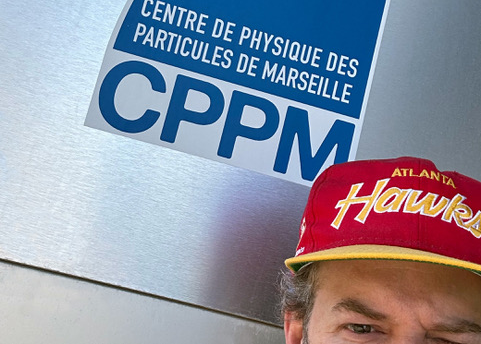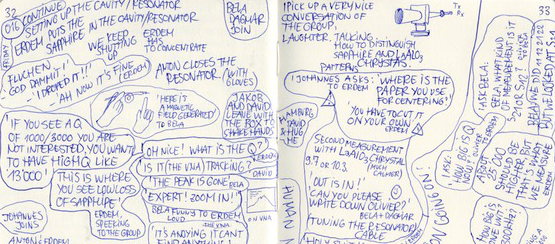MADMAX is an experiment currently being created to find a previously undetected particle. The sought-after axion could answer two central questions in particle physics: What is dark matter made of, and why is the interaction that holds atomic nuclei together so symmetric? Scientists from ten research institutes are working in the international MADMAX team, together with an artist: the Swiss Olivier Rossel has already been accompanying the project since 2018. He recently started his doctoral thesis "Intra-Axion!" at the Brandenburg University of Technology. His topic: "How art, pop culture and experimental physics join to search for dark matter."
The MADMAX project was initiated in 2017 by researchers at the Max Planck Institute for Physics; it is being realized at DESY in Hamburg. For the search for the axion particle, a very demanding experiment is being created with regard to technology and organization. It is new territory for all participants and poses great challenges. This special situation motivated Olivier Rossel to look at the project from the perspective of art - and to investigate overlaps between artistic and scientific-experimental creative processes.
"Every work of art is an experiment. At the beginning, it's hard to say where it will go and what impact it will have," Olivier Rossel explains. "Conversely, research projects like MADMAX have a very large creative component and thus bear an essential characteristic of art. In both disciplines, the people involved have to keep changing their perspectives because new questions or problems require rethinking."
On the way to a common terminology
The researching artist is in regular exchange with the international research team. In his work, he is particularly interested in the communicative and technical practices within the MADMAX network. Since many processes and techniques are new, the researchers need a common terminology. Specifically, it is about (linguistic) images, formulations, and special codes, including gestural ones, that develop within the network and contribute significantly to research on axions.
"I see researchers coining terms and using novel images and graphics as their tools," he says. "For example, one software is called 'Dancing Caterpillar,'" says Olivier Rossel. "And a scientist talks about 'Little monsters' in the context of images of his measurements, wondering about their potential to generate new knowledge about our universe." At this point, the artist specifically explores how pop cultural influences interact with experimentation. For example, he explores how art-related video games and experimental physics influence each other.
Enrichment for the MADMAX team
Currently, Olivier Rossel is in the process of collecting usable data and getting to the bottom of epistemological questions. Already, he concludes that "developing and bringing forth novel ways of thinking and acting by the researchers involved plays as important a role as designing and building new measurement apparatus at the edge of technical feasibility."
"For the MADMAX team, Olivier's presence is always a great enrichment, says Béla Majorovits, a scientist at the Max Planck Institute for Physics and spokesperson for the MADMAX collaboration. "By holding up an epistemic mirror to us, as it were, he not only triggers a critically creative exchange of ideas, but equally makes us aware of the positive and negative effects of our communication methods we often use subconsciously.”

